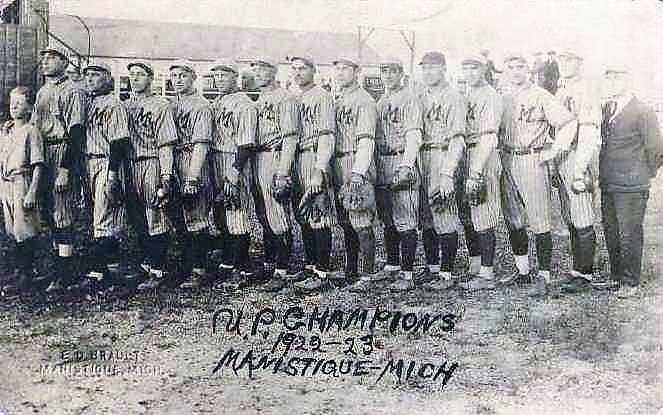
The above photo of the Manistique championship baseball team by E.O. Brault appeared in the October 4, 1923 edition of the Pioneer Tribune.
Manistique had a marvelous baseball team back in the early 1920s. During the summer of 1923 the team played a total of 31 games and finished with a record of 22 wins and 9 losses. Twenty-five games were played against Upper Peninsula teams and 6 games were played against traveling African American teams including the Illinois Giants from Chicago and the New York Royals. The Manistique club won 19 of 25 games played against the Upper Peninsula teams and went 3-3 versus the traveling teams from New York and Chicago.


